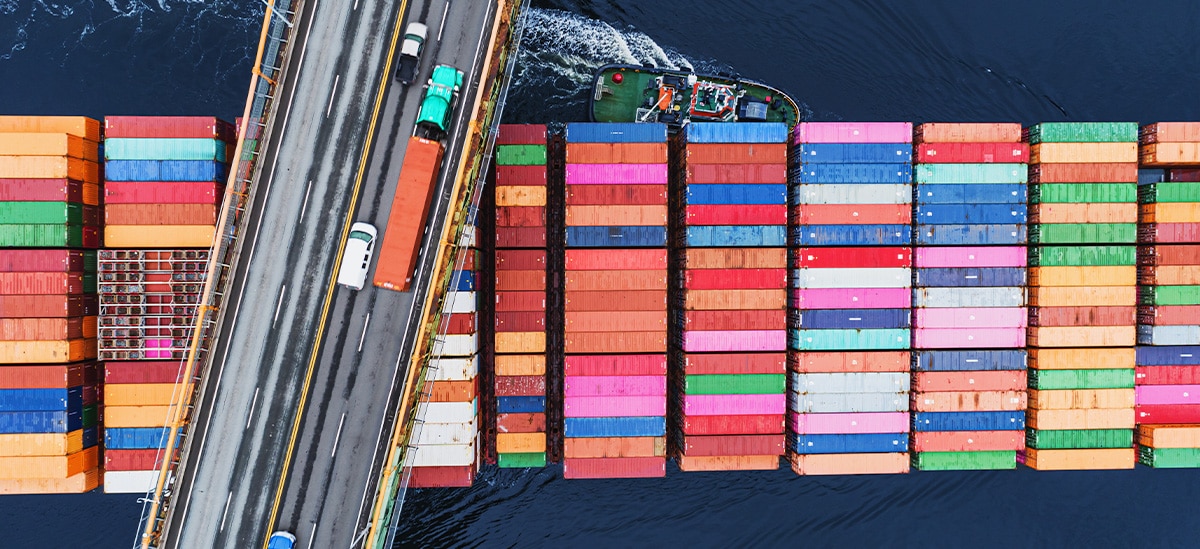
What is a tariff?
A tariff is a tax on imported goods. Typically, the tariff is a percentage of the value of the import.
What is the purpose of a tariff?
Governments levy tariffs for a variety of reasons. One is to raise revenue. Another is to protect domestic industries from foreign competition. And tariffs may also be used to punish foreign nations for unfair trading practices or other reasons, such as human rights violation.
Who bears the cost of the tariff?
Legally, the importer pays the tariff. But there is a difference between who legally bears the cost and who ends up paying for it. Typically, foreign producers raise their selling costs to make up for at least some of the cost of the tariff, passing it along in part to their customers. How much of the tariff consumers end up paying depends on how strong demand is for the good and the availability of substitutes from the U.S. and other nations not subject to the tariff. The stronger demand is, and the fewer alternatives are available, the more of the tariff final customers end up paying.
In addition, the value of the foreign currency relative to the dollar may weaken in response to the tariff, reducing the price in dollar terms to offset it; this would also make U.S. exports to the other country more expensive in the local currency.
What are some of the other economic costs of tariffs?
First, importers may not be the only ones to raise prices in response to tariffs. To the extent that tariffs reduce demand for imported goods, this gives domestic manufacturers more pricing power and allows them to raise the prices they charge their buyers. For some small businesses that compete with imports this may be a positive, providing them with increased sales and larger profit margins.
Just like any sales tax, higher prices due to tariffs lead to lower demand for the good and lower sales. In addition, higher tariffs mean consumers have less money to spend on other goods and services, reducing overall demand in the economy.
In addition, tariffs can raise prices for U.S. industries that use imported goods. Many U.S. manufacturers include imported components in their products, while others buy imported goods to use, such as construction materials and high-tech goods. These companies may raise their prices in response to higher input costs from tariffs, which can translate into lower sales. These higher costs and reduced sales may be particular problems for small businesses, which have less ability to push back against price increases.
In addition, our trading partners may respond to tariffs by restricting U.S. exports to their countries, either through tariffs of their own or other barriers, such as import quotas. These retaliatory actions reduce demand for U.S.-produced goods; for small businesses that export, these higher tariffs could pose a substantial threat.
What are some of the benefits of tariffs?
Tariffs can protect domestic industries from competition. In particular, tariffs can allow a country to gain a foothold in an industry that another country dominates. For small businesses in particular, tariffs may allow them the breathing room to compete against overseas firms that dominate an industry.
While tariffs may support domestic employment in the affected industries, across all industries employment effects are negligible. Tariffs can also strengthen a country’s bargaining power; the current administration has used the threat of higher tariffs to encourage U.S. trading partners to act on policy priorities such as immigration.
Tariffs are a source of tax revenue, and to the extent that higher tariffs increase revenues, can allow for cuts in other taxes. In addition, companies located in other nations end up paying at least some of the tariff revenue.
How important are imports and exports to the U.S. economy?
In 2024, goods imports accounted for 11% of U.S. GDP, with the eurozone, Mexico, Canada, and China each making up about 14% to 17% of goods imports. Goods exports made up 7% of GDP in 2024.
How will interest rates respond to tariffs?
The Federal Reserve is concerned about the impact of tariffs on inflation. One of the central bank’s goals set by Congress is stable prices, which the Fed defines as 2% inflation. By raising prices to consumers, tariffs would cause higher inflation. However, the Fed’s response will depend on whether this increase in inflation is temporary or permanent. If tariffs cause a one-time jump in prices, but then inflation (the rate at which prices increase) quickly reverts to its pre-tariff level, the Fed could choose to ignore the temporary pickup in inflation. Alternatively, if tariffs cause inflation to move higher for an extended period of time, perhaps because higher tariffs lead to larger increases in wages that in turn keep inflation elevated, the central bank could decide to tighten monetary policy, raising the federal funds rate (the Fed’s key short-term policy interest rate) in an effort to slow economic growth and cool off inflationary pressures in the U.S. economy. In his public statements Federal Reserve Chair Jerome Powell said that the Fed would wait and see what tariffs are implemented and what their impacts on inflation and economic growth turn out to be before adjusting monetary policy in response.
What about the impact on small businesses in particular?
The impact of tariffs on any particular small business will depend on a few factors. The first, obviously, is how much foreign competition a business faces. U.S.-based manufacturers that compete against foreign firms will be able to increase sales and raise prices as their competitors are forced to charge higher prices.
A second is pricing power. If a small business has more pricing power—there are few competitors, it provides a specialized product, it provides a necessity—they are less exposed to the potential negative impact of tariffs. These companies will have a greater ability to pass along higher costs to their customers.
Another factor is how many foreign products the company uses. Manufacturing and construction firms that depend on components produced overseas will face higher costs and may not be able to pass all of these higher costs along to their customers. Even if they can pass these costs along, the higher prices charged will reduce sales. Even services firms will face higher costs for necessary goods like office supplies, furniture, computers, and telecommunications equipment, reducing profits.
There are also the economy-wide impacts of tariffs that will affect small businesses. As a tax tariffs will make households less well off, reducing their spending on all types of goods and services. And to the extent that interest rates are higher than they otherwise would have been without the tariffs, small businesses will face higher borrowing costs.




